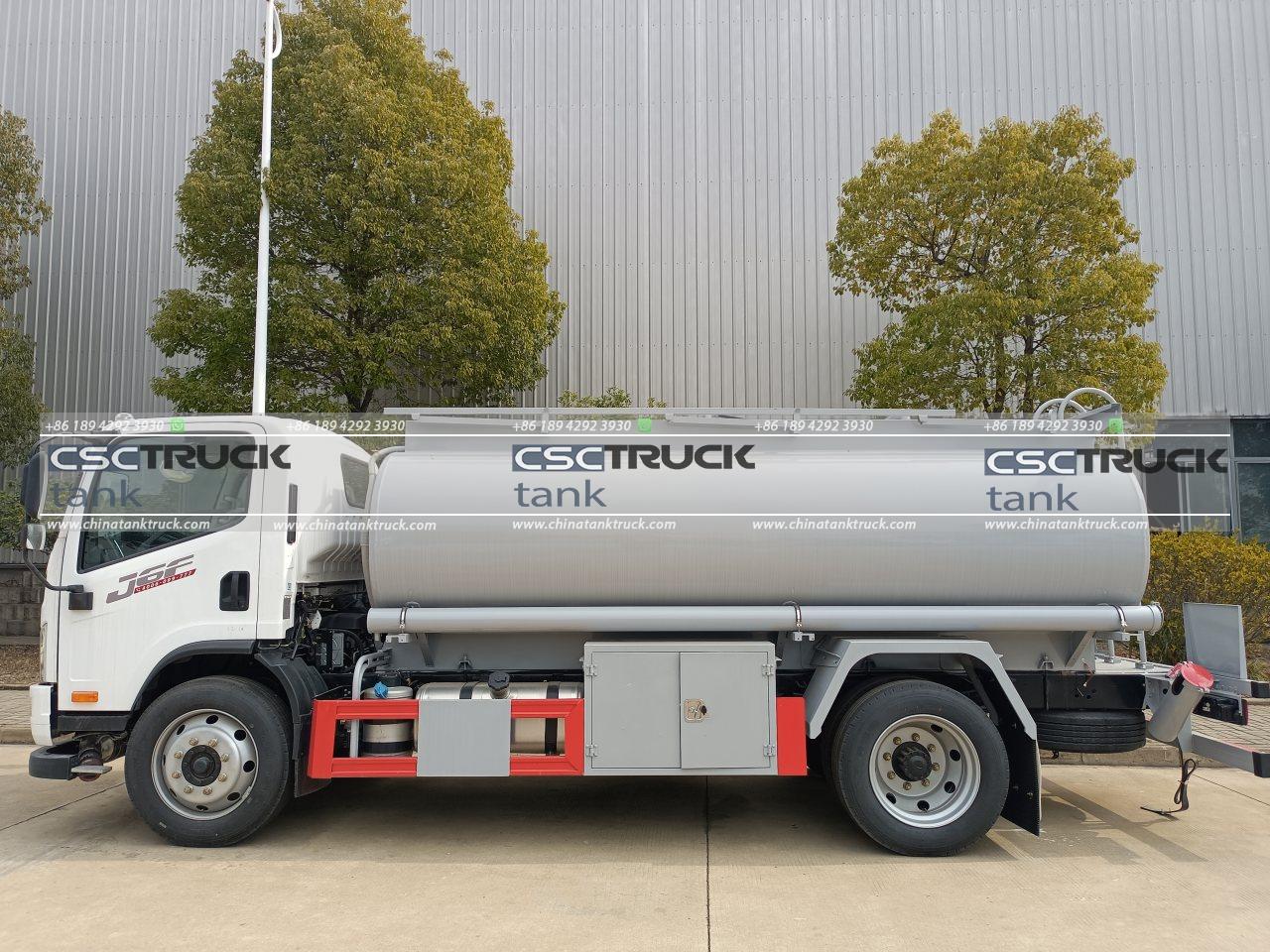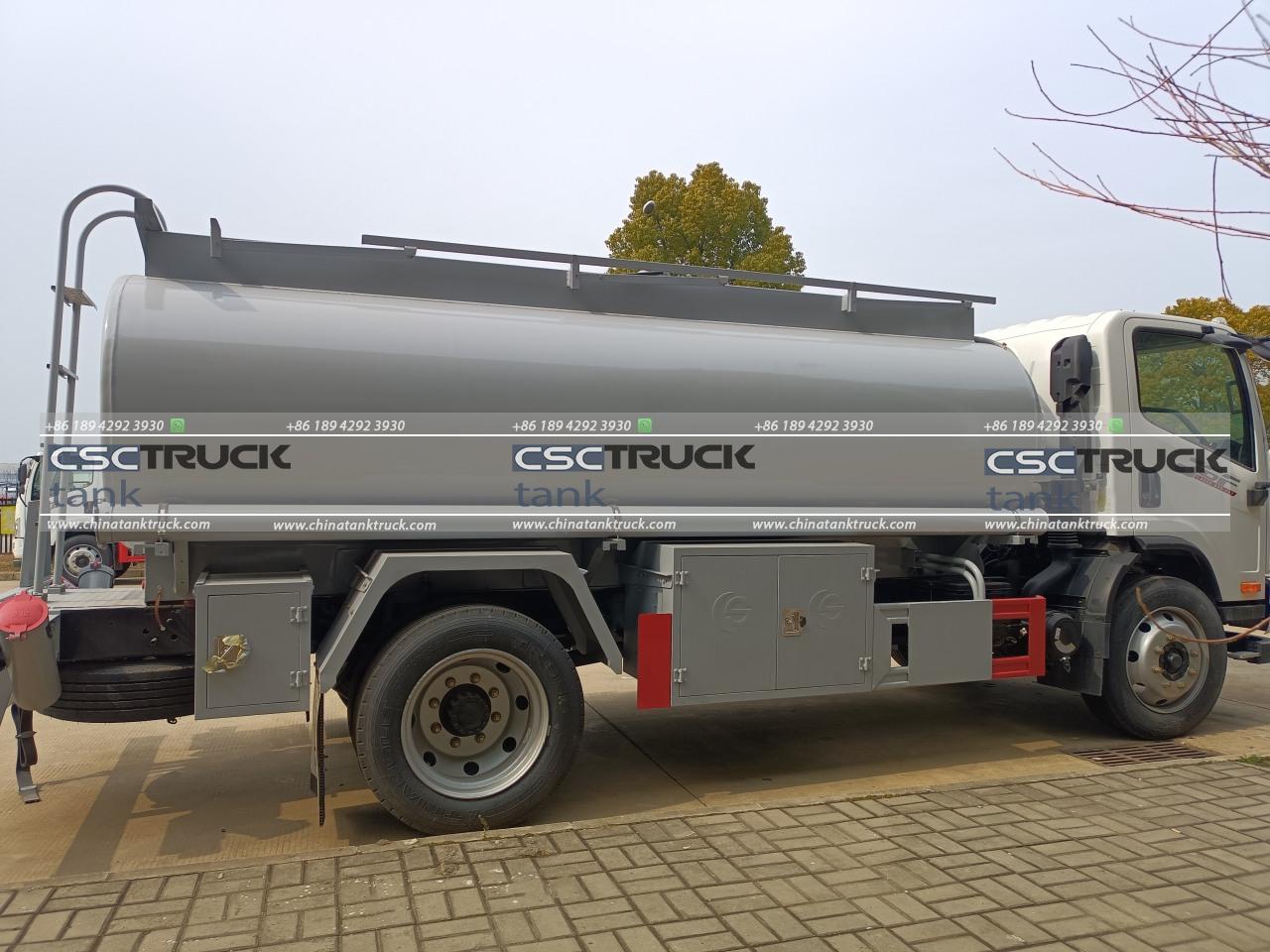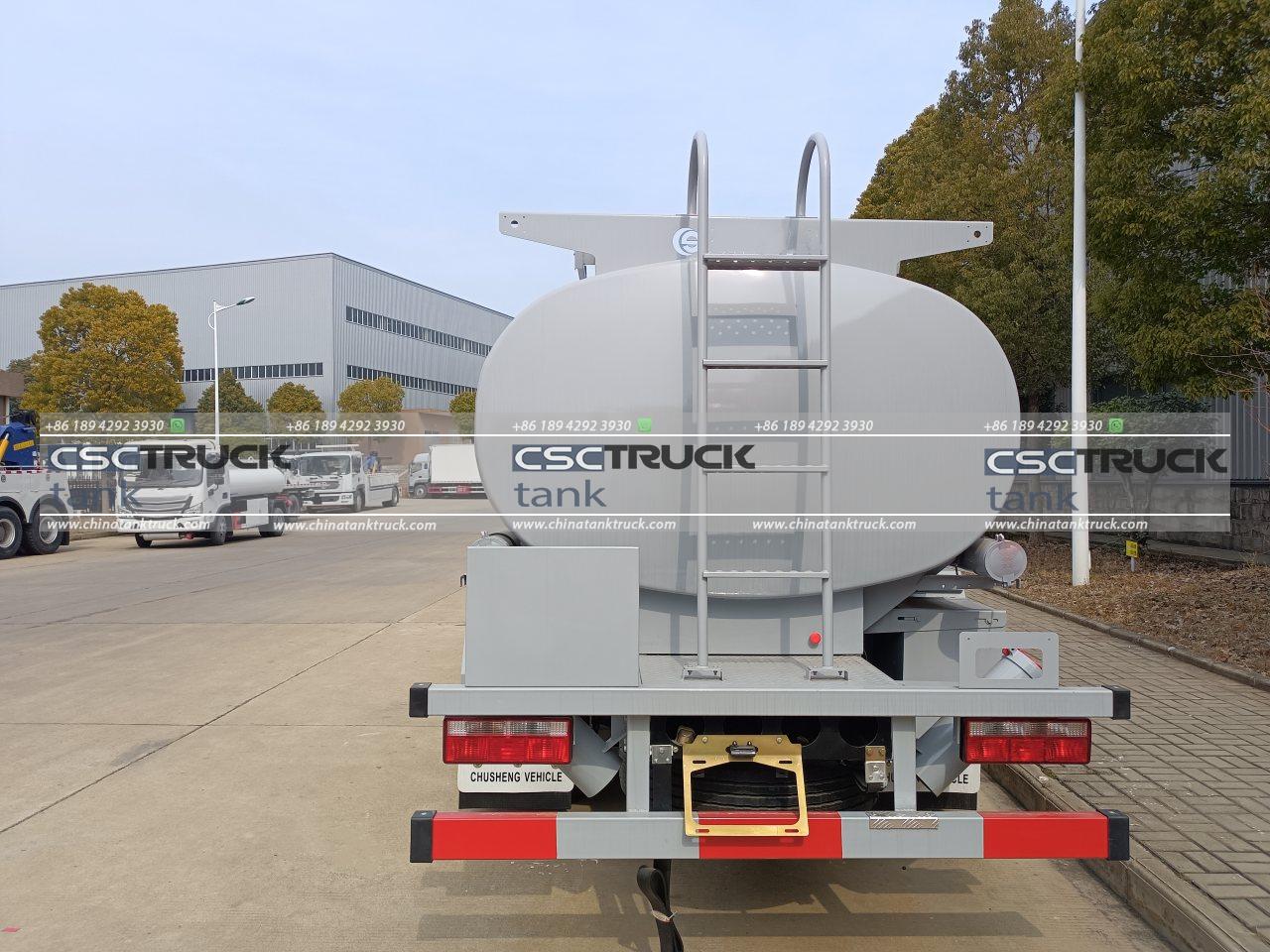What is the Size of a Petrol Tank Truck?
Petrol tank trucks are essential vehicles in the logistics and fuel distribution industry, transporting large quantities of petroleum from refineries and storage facilities to petrol stations, industrial sites, and other destinations. These trucks are uniquely designed to carry liquid fuel in bulk, which requires special construction considerations for safety, efficiency, and environmental compliance. One of the critical factors when evaluating these trucks is their tank size, as it dictates the volume of fuel they can carry, which directly impacts operational efficiency. This article explores the various sizes of petrol tank trucks, factors influencing tank capacity, types of fuel tank trucks, and key considerations when selecting or operating them.
1. The Basics of Petrol Tank Trucks
Petrol tank trucks, also known as fuel tankers or tanker trucks, are commercial vehicles equipped with large storage tanks designed to safely transport liquid fuels such as petrol, diesel, or aviation fuel. Their main features include cylindrical tanks, safety systems to prevent fuel spillage, and secure piping systems for loading and unloading fuel.
These trucks are generally classified into different types based on their size, capacity, and purpose. They range from small to large units, with each type tailored to specific fuel transportation needs. The size of the tank, which is a core attribute of these trucks, typically varies based on the truck’s gross vehicle weight rating (GVWR) and intended application.

2. Factors Determining the Size of Petrol Tank Trucks
Several factors influence the tank size of a petrol tanker truck, including:
– Legal Restrictions and Road Regulations: Different countries have varying regulations governing the maximum allowable weight and dimensions for trucks on public roads. In the United States, for instance, federal regulations dictate axle weight limits, which indirectly influence the maximum fuel capacity a truck can carry.
– Vehicle Type and Chassis Specifications: The design of the truck’s chassis also plays a role in determining the maximum tank size. The truck’s overall structure, wheelbase, and axle configuration can all impact the weight distribution and size of the tank that can be safely carried.
– Fuel Type: Different fuels have varying densities, which affects the tank’s volume. For example, petrol is less dense than diesel, so a truck may carry a larger volume of petrol than diesel for the same weight limit.
– Safety Considerations: Tankers carrying volatile or hazardous materials, such as petrol, must adhere to strict safety standards. Regulations might limit tank size to manage risks associated with carrying highly flammable materials.
3. Types of Petrol Tank Trucks and Their Sizes
Petrol tank trucks are classified into several types based on their size and usage. Here is an overview of each category, including the approximate tank sizes:
Small Tank Trucks (Light-Duty Tankers)
These are typically smaller trucks used for short-distance fuel delivery and are commonly seen in urban areas. They are often employed by fuel distributors to supply fuel to small-scale consumers or businesses.
– Capacity Range: 3,000 to 5,000 liters (approximately 790 to 1,320 gallons)
– Dimensions: These trucks are usually around 5-7 meters (16-23 feet) in length, making them suitable for navigating narrow urban streets.
– Applications: Small tank trucks are ideal for local fuel delivery, fuel station refills, and supplying fuel to construction sites or industrial facilities.
Medium Tank Trucks (Medium-Duty Tankers)
Medium tank trucks provide a balance between capacity and maneuverability, making them suitable for both urban and regional fuel delivery. They are often used by fuel distribution companies that need to cater to both city and highway demands.
– Capacity Range: 5,000 to 15,000 liters (approximately 1,320 to 3,960 gallons)
– Dimensions: Generally, these trucks are about 7-10 meters (23-33 feet) in length.
– Applications: Medium tankers are used for regional fuel transport, airport refueling, and supplying fuel to larger commercial consumers.
Large Tank Trucks (Heavy-Duty Tankers)
Large petrol tank trucks are designed for long-distance fuel transport and bulk deliveries. They are typically used for intercity or interstate deliveries, carrying fuel from refineries to regional storage depots or major fuel stations.
– Capacity Range: 15,000 to 40,000 liters (approximately 3,960 to 10,570 gallons)
– Dimensions: These tankers are around 10-15 meters (33-49 feet) in length, with multiple axles to support the heavy load.
– Applications: Large tank trucks are used in long-haul fuel distribution and major fuel transportation routes.
Extra-Large Tank Trucks (Road Trains or Super Tankers)
In regions with vast distances, like Australia and parts of the United States, road trains or supertankers are used. These are trucks with multiple trailers attached, significantly increasing their capacity.
– Capacity Range: 40,000 to 80,000 liters (approximately 10,570 to 21,140 gallons) or more, depending on the number of trailers.
– Dimensions: These trucks can exceed 20 meters (65 feet) in length.
– Applications: Extra-large tankers are used in remote areas with long distances between refineries and fuel stations, such as in mining regions or isolated industrial facilities.

4. Key Considerations for Tank Truck Capacity
When choosing a petrol tank truck or understanding its operational needs, several factors are essential beyond just the capacity range:
a. Weight Limits
The gross vehicle weight rating (GVWR) is critical, as fuel is a heavy cargo. Regulatory bodies set strict limits on the weight a vehicle can legally carry on public roads. For instance, the maximum GVWR for a tank truck in the U.S. is typically limited to 80,000 pounds, including the truck’s weight.
b. Compartmentalization
Many petrol tank trucks have compartments within the tank, enabling them to carry different types of fuel (e.g., petrol, diesel, jet fuel) in separate sections. Compartmentalization also improves stability by reducing liquid sloshing, which can affect handling and braking.
c. Loading and Unloading Infrastructure
Tankers are designed with specialized piping systems for secure loading and unloading, often equipped with vapor recovery systems to prevent fuel loss and reduce environmental impact. In some cases, loading infrastructure at fuel depots also impacts the practical tank size that a truck can utilize.
d. Safety Features
Safety is paramount in petrol tankers due to the flammable nature of the fuel. Many tanks are designed with baffles to minimize fuel movement during transport, while some tanks are reinforced to prevent ruptures. Additionally, many fuel tanker trucks are equipped with grounding equipment, emergency shut-off valves, and fire suppression systems.
5. Environmental and Economic Considerations
In recent years, fuel transport companies and manufacturers have placed increased focus on the environmental impact of tank trucks. As a result, the design and size of petrol tank trucks are evolving to accommodate alternative fuels, enhance fuel efficiency, and reduce emissions. Larger trucks with greater capacity can reduce the number of trips required for fuel delivery, thus decreasing emissions and overall transportation costs.
However, very large tankers can also increase road wear and emissions per trip if not optimized, so companies balance the need for large-capacity trucks with fuel efficiency considerations. Many newer trucks now use aerodynamic designs and lightweight materials to maximize efficiency without compromising capacity.

Conclusion
The size of a petrol tank truck varies significantly depending on its intended use, regulatory limitations, and design specifications. Small, medium, large, and extra-large tankers each have distinct applications in fuel transport, ranging from local urban deliveries to long-distance, high-capacity routes. For any company or individual involved in fuel logistics, understanding these variations and the factors influencing tank size is crucial for optimizing operations, ensuring compliance, and maintaining safety. With continuous advancements in technology, the next generation of petrol tank trucks may see even greater efficiency and environmental compatibility, meeting the growing demand for reliable and safe fuel transport in our modern world.

